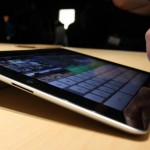High blood pressure (medically termed hypertension) is a serious condition that can lead to stroke and heart disease. It’s thought around 16 million people in the UK suffer from hypertension.
Unfortunately, due to its distinct lack of symptoms, nearly one third of the population with high blood pressure are walking around undiagnosed and therefore untreated.
If you are over 40, you should be having your blood pressure measured by a health care professional every five years.
If you have been diagnosed with hypertension, you may have been requested to carry out at-home monitoring of your own blood pressure.
Your health is at stake when it comes to monitoring your blood pressure and so it’s important to carry these procedures out correctly and consistently.
Monitoring your blood pressure yourself at various times during every day activities also helps you to identify any situations that raise or lower your blood pressure – a key step in identifying ways you can manage your lifestyle.
What is blood pressure?
Blood pressure measures the strength at which the blood presses against the walls of your arteries as it is pumped around your body. Too high a blood pressure will not only put strain on your arteries but also put strain on your heart and increase your risk of suffering from a heart attack, stroke or even kidney disease.
What do the numbers tell me?
When measuring your blood pressure, you will be presented with two figures expressed as millimetres of mercury (mmHg). These two figures represent systolic and diastolic pressure. Systolic pressure is a measure of the force of blood as it is pumped out of the heart (this is when it is at its highest) and diastolic pressure is the measure of blood when your heart is in between beats and resting (this is when it is at its lowest).
For example, when you hear your blood pressure is “130 over 80” this equates to 130/80mmHg and means your systolic pressure is at 130mmHg and your diastolic pressure is 80mmHg. In general, a reading between 90/60 and 140/90mmHg is considered a normal range for blood pressure.
Hypertension is diagnosed when you have consistent readings of 140/90mmHg or higher, which are read on separate occasions. Hypotension (low blood pressure) is diagnosed when you consistently read lower than 90/60mmHg.
Which blood pressure monitor is best for me?
When it comes to measuring your blood pressure there are two main points to look for in a blood pressure monitor – accuracy and ease of use. They should be easy to read, allow recording of readings and ideally warn the wearer when blood pressure is extremely high or low.
Devices to suit a busy lifestyle
For ease of use the Withings Blood Pressure Monitor is recommended. Retailing at around £120, this monitor is rather pricey, but it does suit smartphone uses as it can connect directly to your iPad, iPod or iPhone. When in use, each measurement is automatically saved to your device and can even be displayed in a simple to read chart or graph. This makes is easy to monitor your blood pressure throughout the day and to highlight activities that may increase or decrease your blood pressure.
Wrist Devices
New technology is emerging now that could allow you to monitor your blood pressure through a simple device resembling a wrist watch. However, these are still in the frameworks of development and don’t necessarily match price for quality.
Those that are available for purchase will also often provide inaccurate readings as they require your wrist to be precisely at heart level, something not all wearers take into consideration. Inaccurate readings lead to inaccurate diagnoses so it’s best to wait until technology picks up for wrist devices.
Low Cost Devices
Those looking to make a smaller investment should take a look at the British Hypertension Society’s list of clinically validated home-use blood pressure monitors. When consulting this list, you can find a good, practical at-home monitor for around £20 and be safe in the accuracy and quality of your device.
When monitoring your blood pressure at home, it’s important you are operating your device correctly to ensure an accurate measure of your blood pressure. Take you monitor with you to your GP to ensure you are using it correctly and talk with your nurse or GP to agree on the timings of each reading and how often you should be recording them.
 Author: Dr Nigel Smith, MB ChB DOccMed, Partner at Blossoms Healthcare.
Author: Dr Nigel Smith, MB ChB DOccMed, Partner at Blossoms Healthcare.
He has over thirty years’ experience in managing complex health risks within working environments, as well as the refined skills necessary to support the most discerning of private patients.
Nigel has a particular interest in respiratory medicine, particularly Asthma and has been performing comprehensive Executive Medicals throughout his career





